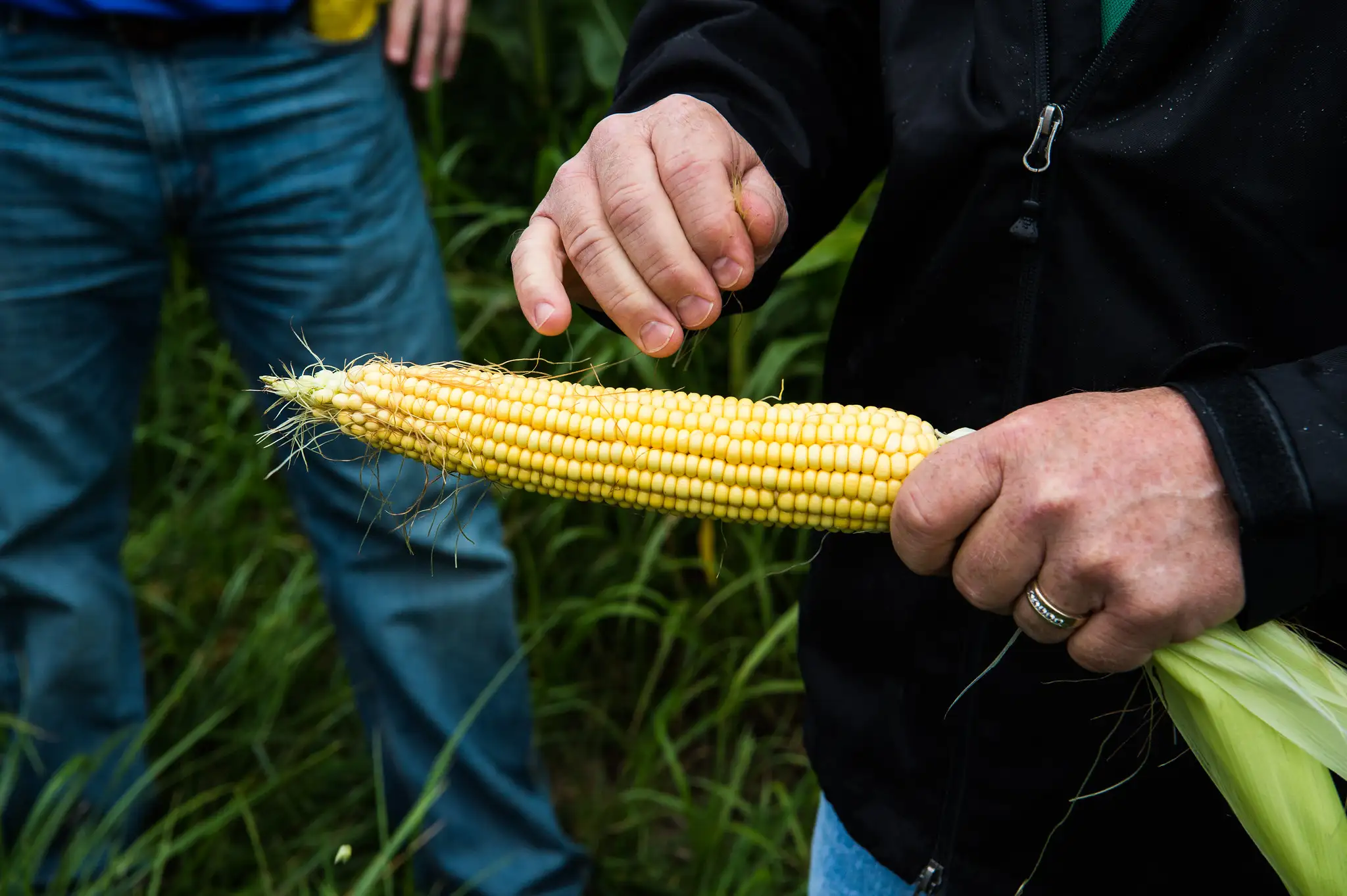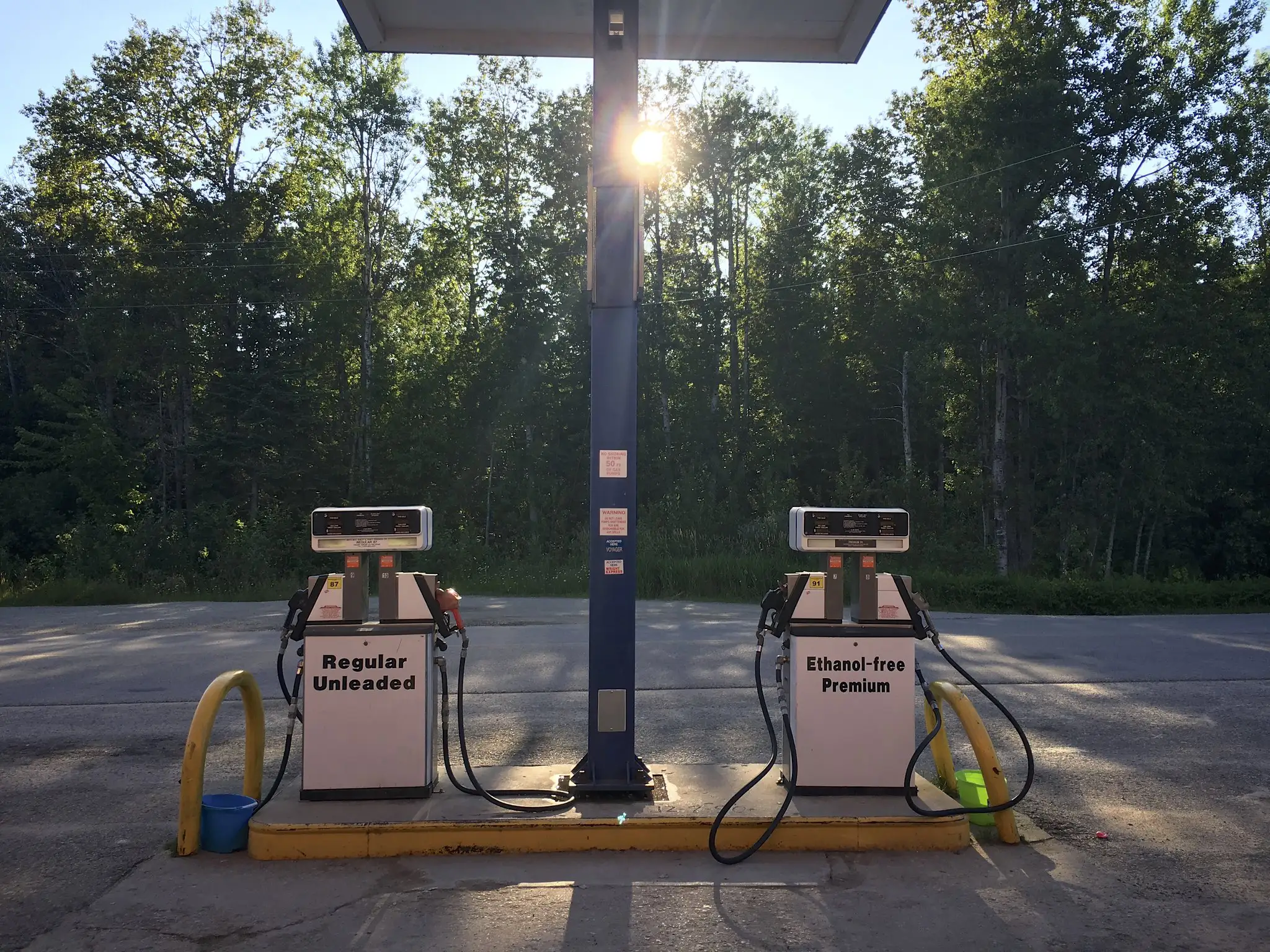Golden Grain Ethanol plant in Mason City, Iowa. Photo by Dennis Schroeder / NREL used under CC BY-NC-ND 2.0
Corn ethanol is used to supplement gasoline in the U.S., supported by a range of subsidies and policy approaches since 2005. Initially ethanol was hoped to reduce reliance on foreign imports of fossil fuels, boost incomes for farmers, and have improved sustainability in comparison to fossil fuels. However, emerging research suggests it has a range of negative environmental impacts, including on water, soil and the climate.
What is ethanol?
Ethanol is a biofuel produced by breaking down grains. In the U.S. it is primarily made with corn and used to supplement gasoline. Different blends are available - E10, which is 10% ethanol can be used in any vehicle. E85, which ranges from 51 to 83% ethanol, is also available for flex-fuel vehicles. According to the USDA, as of January 2024 “blending ethanol into gasoline has helped reduce fuel costs by approximately 25 percent, contributing to falling gas prices across the country.”

3rd-generation farmer April Hemmes grows corn for ethanol. Photo by Dennis Schroeder / NREL used under CC BY-NC-ND 2.0
A brief history
In the 1980s, companies took advantage of low corn prices and high production, as well as a range of government subsidies and tariffs, to use excess corn in a range of ways: livestock feedlots, high-fructose corn syrup, and ethanol. Meanwhile, family farms, unable to pay loans they took to grow and invest in corn production due to these low prices, shuttered their doors in droves.
In 2005 the Renewable Fuel Standard was introduced, requiring a quota for blending ethanol into gasoline in the United States. Ethanol was seen to be more sustainable than fossil fuels, and was a way to support corn-producing farmers. It was also widely and domestically available, reducing reliance on foreign petroleum products. In 2007, the Energy Independence and Security Act of 2007 increased the amount of ethanol to be blended into gasoline even further.
Sustainable or not?
Early proponents of ethanol believed it would have a lower environmental impact than gasoline. But already in 2013, emerging research was raising concerns that increased ethanol production was increasing carbon emissions due to the cultivation of previously conserved land. Then, in 2022, a five-year study showed the long-term impacts of this shift to ethanol. According to Civil Eats “it led to increased fertilizer use, water pollution, and likely at least 24 percent more emissions than gasoline.” Emissions in this study took into account the land use practices required for monocropping enormous quantities of maize.
Indeed, as of 2023, 40% of the U.S. corn crop went to ethanol production. The negative impacts of monocropping are well documented, from declining bee populations from insecticides, soil degradation, water pollution from nitrogen fertilizers. And according to Inside Climate News, “a mounting pile of studies shows corn ethanol has not dampened demand for fossil fuels, as expected, but has instead forced the conversion of grasslands and forests into croplands, both domestically and internationally, releasing carbon in the process.”

A rural gas station with ethanol and ethanol-free gasoline options. Photo JC Burns used under CC BY-NC-ND 2.0
The current state and the future
After many years of subsidies for ethanol, U.S. transportation policy now focuses on electric vehicles. But ethanol proponents say it’s not going anywhere any time soon. Indeed, the EPA recently allowed for the use of a higher-blend ethanol-gas mixture in eight states in the Midwest.
Meanwhile, the White House seems to have changed course around sustainable aviation fuels (SAFs). While initially in April it appeared ethanol might feature largely in the Biden administration’s approach to SAFs, by May it seemed that little to no ethanol would be eligible for these tax breaks. Moving forward, the role of ethanol in the U.S. energy transition remains to be seen, but continues to be carefully evaluated, taking into account broader environmental impacts emerging.
